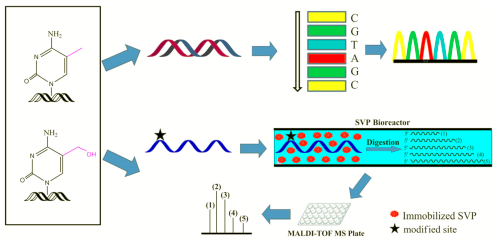化学学报 ›› 2013, Vol. 71 ›› Issue (01): 26-35.DOI: 10.6023/A12110891 上一篇 下一篇
综述
赵超, 汪海林
Zhao Chao, Wang Hailin

5-羟甲基胞嘧啶(5-hydroxymethylcytosine, 5hmC)是继5-甲基胞嘧啶(5-methylcytosine, 5mC)之后发现的第六种碱基, 已在多种哺乳动物组织和细胞中检出. 与5mC相比, 5hmC的含量更低, 但5hmC也具有非常重要的生物学功能. 已有的研究表明, 5hmC参与了染色体重新编程、基因表达的转录调控, 并在DNA去甲基化过程中发挥重要作用. 另外, 5hmC可能与特定肿瘤的发生密切相关, 有可能成为肿瘤早期诊断的生物标志物. 因此, 发展可靠、灵敏和准确的5hmC检测技术至关重要. 本综述针对DNA羟甲基化的检测及测序技术进行了简要介绍.